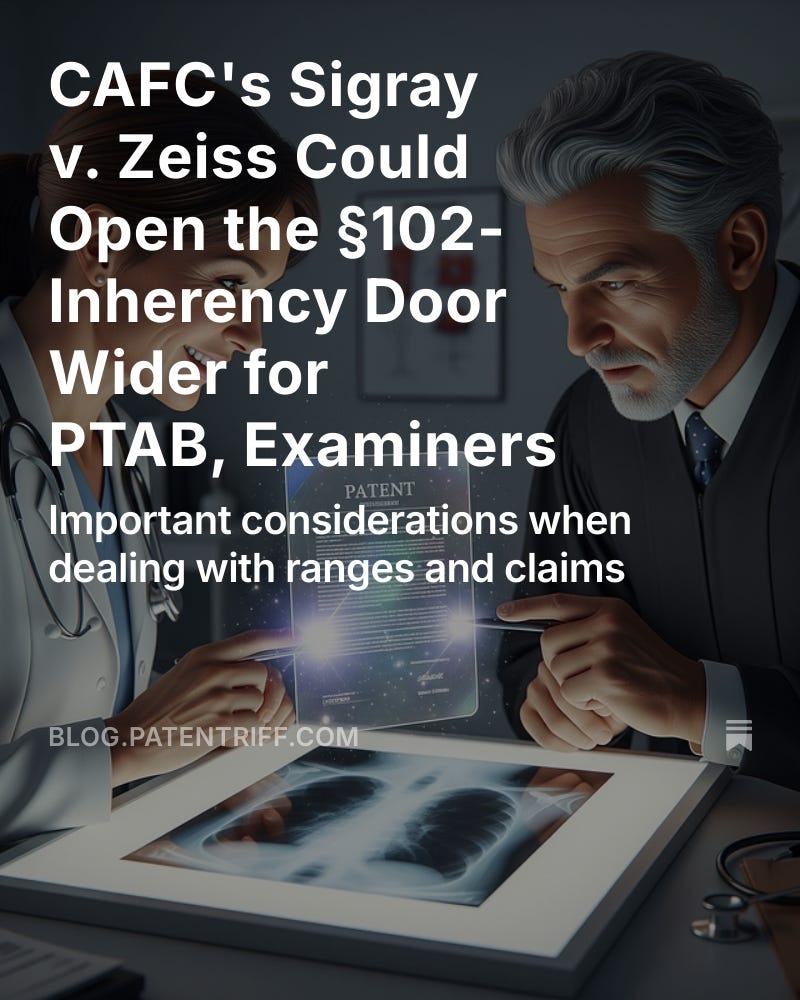The recent Federal Circuit decision in Sigray, Inc. v. Carl Zeiss X-Ray Microscopy, Inc. is a significant precedential decision with several implications for how patent attorneys approach drafting and defending claims that include numerical ranges.
The case involved a claim for X-ray imaging systems that included the limitation "projection X-ray stage magnification between 1 and 10 times…"
The podcast addresses:
What was the central issue in Sigray v. Carl Zeiss X-Ray Microscopy, Inc.?
What did the Federal Circuit rule in Sigray v. Zeiss?
How did the concept of "inherent disclosure" play a key role in the Federal Circuit's decision?
Why did the Federal Circuit find fault with the PTAB's approach?
What claims were ultimately found to be anticipated by the Federal Circuit, and what claims were remanded?
What is the key takeaway from Sigray v. Zeiss regarding the relationship between claimed ranges and inherent disclosure?
How might this ruling impact the PTAB's assessment of anticipation arguments moving forward?
What does this decision mean for patent practitioners drafting claims with numerical ranges?
Disclaimer: This is provided for informational purposes only and does not constitute legal or financial advice. To the extent there are any opinions in this article, they are the author’s alone and do not represent the beliefs of his firm or clients. The strategies expressed are purely speculation based on publicly available information. The information expressed is subject to change at any time and should be checked for completeness, accuracy and current applicability. For advice, consult a suitably licensed attorney and/or patent professional.









